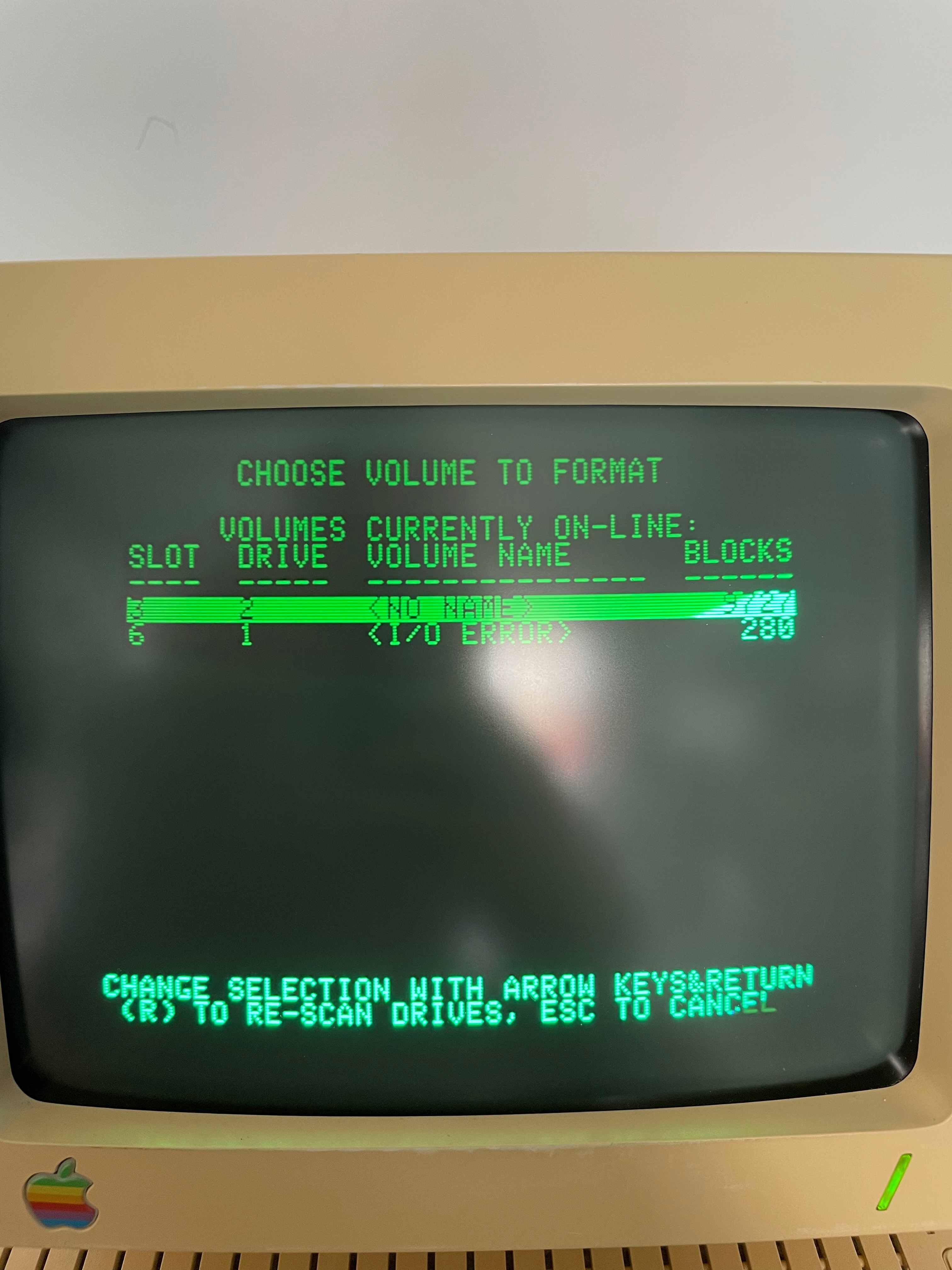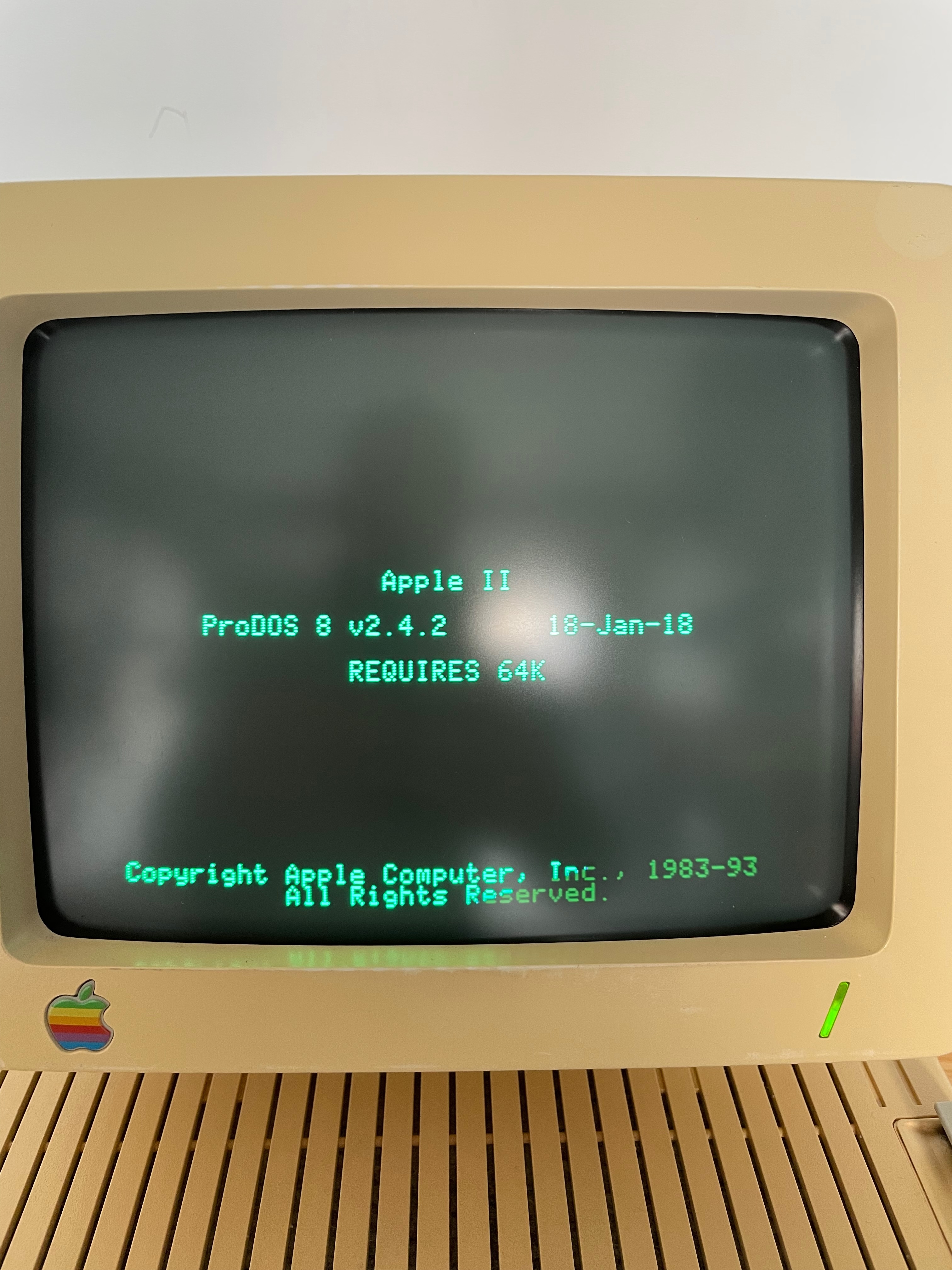Hi folks,
I'm new to the forum. My neighbor found an old Apple IIc in his storage unit and I thought it would be super fun to restore it and write some 6502 assembly/C programs for it.
So far, I can boot and run AppleSoft BASIC, and I can play Oregon Trail from a disk I bought off eBay, no problems.
I have some brand new blank 5.25" floppy disks that I'm trying to write using ADTPro. However, when I try to format the volume, I am seeing <I/O ERROR> under VOLUME NAME. When I run the formatting operation, the disk drive makes clicking noises like there's some kind of mechanical issue.
I'm trying to run a diagnostics program called Apple IIc - Diagnostic diskette Program service 077-8125-A.dsk, but I'm not sure how to load it (or frankly if it's even going to give me the info I need). I tried bootstrapping with VSDrive + Speediboot, but it doesn't seem to work. The splash screen displays and says "REQUIRES 64K".
Any tips on how I can diagnose the problem with the drive? I've read on some other threads that it might be a calibration issue, or there could be an issue with the write protect circuit.



Are the new disks you have high density or double density disks?
If high density, this would explain what you are seeing as high density disks won't work with Apple II drives. The disks must be double density to work properly.
Cheers,
Mike
They are high density. I just ordered some double-sided double density disks. Thanks, Mike.
Jim
Even once you have DD disks, don't worry about ADTPro saying I/O error initially. It's scanning the disk to see if it's already formatted with a volume name to help prevent you from formatting a disk by accident. An unformatted disk will always come up as I/O error when it scans the drives.
Also, don't bother with that //c diag image. It's very cryptic, will error out on anything other than the original 255 ROM version, and requires a loop back plug between the serial ports. Without the loop back it will fail early on in the test sequence. Use the one in that same location called "A2eDiagnostics_v2.1". Despite the name of the file, it's actually made for both the e and c computers. The program title changes depending on which model it's run on, and whoever named the file originally must have ran it on an e.
Which on a side note, anyone know how to request a name change for that file on Asimov? It would be nice for people to know it is also designed for the //c.
Renaming may also not be such a good idea. Potentially breaks hundreds of links on various sites and in forums like this, where people directly refer to the diagnostic utility.
Communication is only through the ftp upload. However, maintenance seems very limited. My suggestion would be to copy the file, rename it to "A2cDiagnostics_v2.1.dsk", and reupload to Asimov's incoming FTP folder. You can also add a readme/txt file, with the name matching the upload, i.e. "A2cDiagnostics_v2.1.txt" and briefly explain this is an identical copy of the A2e... disk, but it also supports the IIc and changes it's name with the hardware.
Then, lean back and wait. It usually takes weeks or months before incoming files are "processed". Eventually, this might happen:
* Your upload is ignored, since it's a duplicate (and the maintainer hasn't read your notice).
* Your image file is uploaded to asimov and duplicated.
* Your image file and your text readme are uploaded to asimov (maybe the maintainer hasn't read your notice, or he did, but he still just copied it).
Good luck! :-)
Thanks! The DD disks worked. I was able to load a disk with ADTPRO-2.1.0.DSK and run it.
I loaded the other side of the disk with A2eDiagnostics-v2.1.DSK. The display is glitchy, and the Main Logic Board RAM Test is failing, but otherwise it seems to be working as expected.
If you are failing logic board testing with that usility, a lot of programs may experience weird artifiacts at minimum to not working at all.
Try running the on-board power-up diagnostic:
Power up the machine while holding the closed-apple key (the one to the right of the spacebar) pressed.
It will run through a logic board diagnostic and report back if you have any RAM issues.
If you do have RAM issues, they ought to be addressed before you proceed.